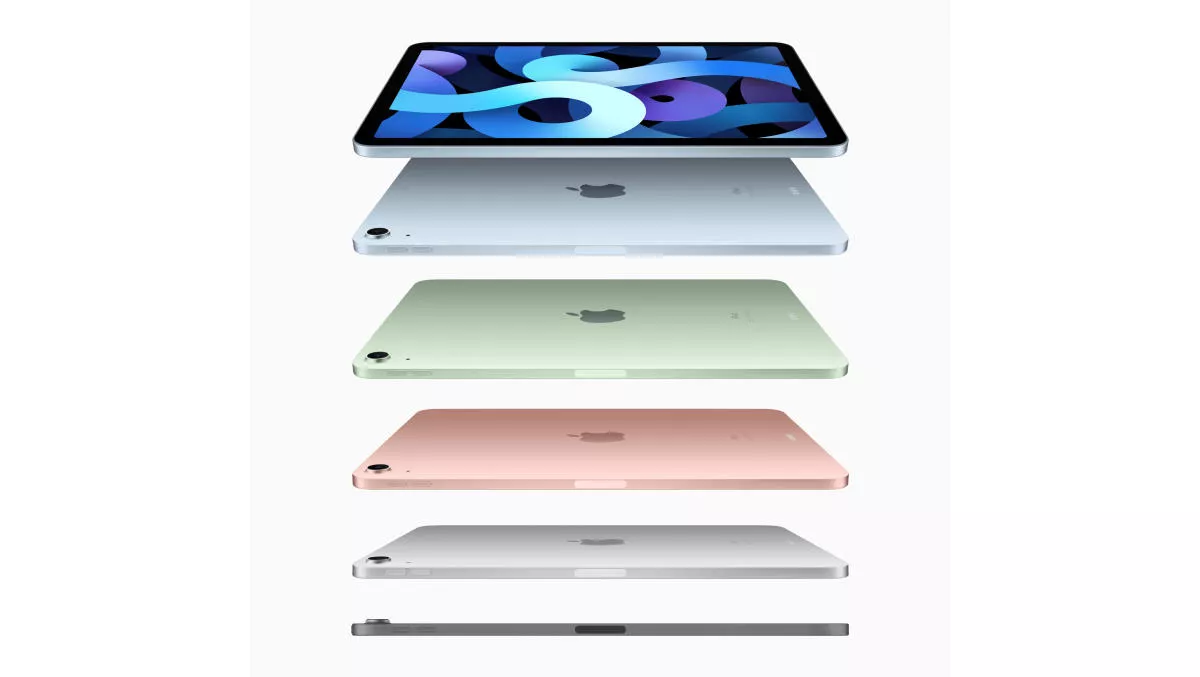Up until recently, the iPad Pro held the title of “best Apple device” in my books. This changed completely when Apple released the latest iPad Air that is compatible with the Magic Keyboard, Apple Pencil second generation and is also powered by iPadOS 14.
The latest iPad Air adopts the iPad Pro design language. It has the same flush and squared edges we love on the iPad Pro. Apple redesigned it to have a bigger 10.9-inch screen while maintaining the small form factor and the lightweight of the older generation iPad Air. The iPad weighs only 450g. This is perfect for anyone who just wants to hold the iPad in their hands rather than have it on a stand or a keyboard folio. I found myself carrying it with me all the time because it was so light.
The 10.9-inch display is Apple's famous Liquid Retina display. That, combined with the thin bezels, makes the iPad Air the perfect streaming device. It is just the right size for content consumption of all kinds.
While the design did not include a face-ID sensor, the iPad Air does come with a Touch ID sensor built into the top button. As someone who migrated from the iPad Pro, I did miss Face ID for the first day or so, but then I quickly adapted. It is also important to remember that this device is not for someone coming from an iPad Pro but rather someone new to iPad, or someone who is updating from an older model.
With that being said, the Touch-ID sensor is actually very impressive. It is exceptionally responsive, and orientation does not matter. This meant that whichever angle I touched the button, the iPad unlocked immediately.
The iPad this year comes in five different finishing options: silver, space grey, rose gold, green, and sky blue. This means that no matter what your style is, there is a colour for you.
The iPad also has two cameras, a 12 MP rear camera that is capable of shooting 4K videos, Slow-motion videos, time-lapses and even panoramas. This is perfect for students who want to dip their toes into a creative space. They can shoot a video with the iPad and then edit it directly on the same device.
The iPad also has a 7MP FaceTime HD Camera. While there are plenty of ways to use FaceTime, online learning is probably one of the most common activities. For example homeschooling is still the main way to go in 2021, and this camera makes the iPad the perfect tool for online classes and study groups on Facetime.
Another game-changing improvement was the addition of USB-C instead of lightning. Users now can connect their cameras, hard drives and even an external display monitor. The combination of USB-C connectivity and iPadOS 14 capabilities means that students can connect the iPad Air to an external monitor, connect a wireless mouse and keyboard. They can now do research, write essays and edit projects just like they would on a laptop.
The iPad Air is also nano-SIM and e-SIM compatible. This means 4G internet is available no matter where the user is! I highly recommend that users actually get an internet plan for their iPad Air if they move around a lot.
While it is a really exciting device on its own, the accessories are what take the iPad Air up to the iPad Pro level. The iPad Air is finally compatible with the 2nd generation Apple Pencil. This means that you no longer have to lose the Apple Pencil in your backpack. It also means that when you find it, it will not be out of battery because you forgot to plug it in. The Apple Pencil 2nd generation magnetically snaps to the iPad and automatically charges. This makes for the perfect, most precise note-taking, drawing and editing tool that is ready to be used in an instant.
The iPad Air is also compatible with the Magic Keyboard. While the regular keyboard folio is great, the Magic Keyboard is on a different level. It is one of the most comfortable typing experiences on the market and can easily compare to any laptop. The Magic Keyboard also has a built-in trackpad that turns the iPad Air into a cute little laptop-like device. It also provides an extra USB-C port for pass-through charging. This means that the iPad's main port will remain available for accessories rather than be used for charging.
While I held the iPad Pro so dear to my heart, I always felt like it was more than what I needed. I was not editing videos on it or using it to its full potential. This made it a pricy option that I can not recommend to friends and families who simply wanted an iPad for school.
The iPad Air, at its affordable price, fun new colours and accessories, solved that problem and is now hands down the number one device I will be recommending for casual users.

